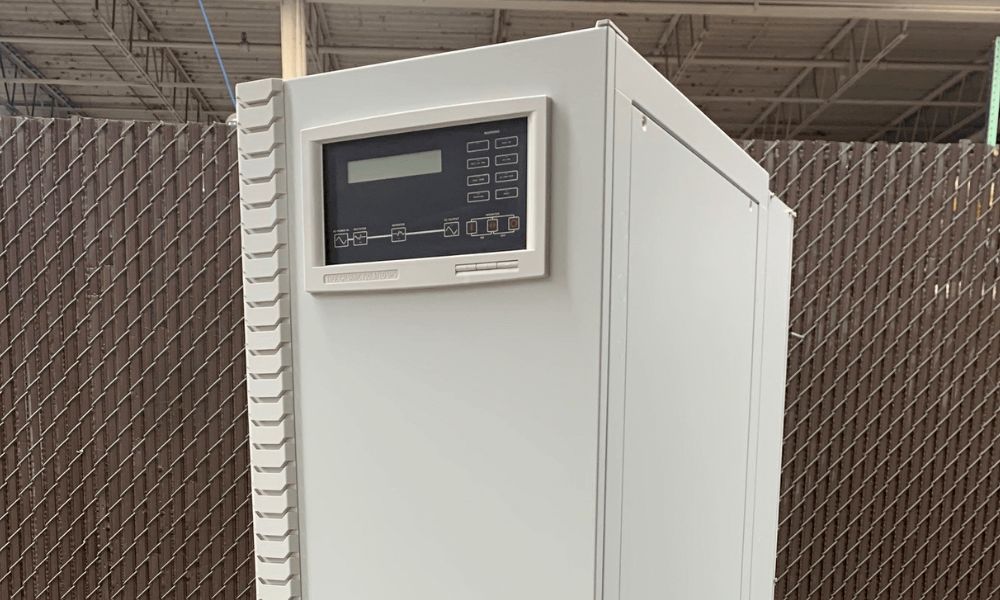A Simple Guide to the Understanding of Solid-State Frequency Converters

In the intricate world of power electronics, few pieces of equipment are as critical yet as misunderstood as the solid state frequency converters. The name itself, laden with technical jargon, can be intimidating, conjuring images of complex circuits and specialized industrial applications. However, behind the technical terms lies a simple, elegant solution to a fundamental problem of modern engineering: making different electrical systems compatible. Understanding what these converters do and why they are so vital is not just for electrical engineers; it’s for anyone who interacts with the global economy, from pilots and naval officers to manufacturers and IT professionals.
This guide will demystify the solid-state frequency converter, transforming a piece of technical equipment into an understandable and indispensable tool. We will move beyond the jargon to reveal how this technology works and why its reliability, precision, and flexibility are central to countless industries.
What is a Solid-State Frequency Converter?
A solid-state frequency converter is a component that alters a source of electrical power. Unlike older, mechanical rotary converters which use a motor-generator set, the solid-state version relies on modern power electronics. This means it uses silicon-based components like transistors and rectifiers to perform its function without any moving parts. This is where the term “solid-state” comes from, signifying a shift away from mechanical, rotating machinery to static, electronic components.
The process is remarkably clever. The converter takes the incoming electrical power (for example, 60 Hz AC power), converts it into a stable DC (Direct Current) power, and then uses a sophisticated inverter to convert it back into AC power, but this time at the desired frequency (e.g., 50 Hz). This two-step process allows for complete control over the final output, providing a clean, stable, and precisely controlled power supply. The absence of moving parts makes it smaller, quieter, more efficient, and significantly more reliable than its mechanical predecessors.
Key Applications: Where These Converters Shine
The need to bridge the gap between different power frequencies exists in many crucial sectors.
1. Marine and Defense: Ships that sail the world’s oceans often need to connect to shore power while in port. With a vessel’s internal systems running on a different frequency than the port’s grid, a frequency converter is a critical piece of onboard equipment. This enables the ship to shut down its generators and conserve fuel and lower sound and emissions. Military applications also require highly reliable converters for sensitive electronic equipment.
2. Manufacturing and Industrial: Many industrial operations involve machinery from different parts of the world. A company might have a highly specialized piece of equipment from a country with a 50 Hz standard that needs to be run in a factory with a 60 Hz supply. A frequency converter allows for the seamless integration of this equipment into the existing production line, preventing costly modifications or the need to purchase new, country-specific machinery.
3. Testing and Development: In research and development labs, engineers need to test products under various power conditions. A solid-state frequency converter can be programmed to produce a wide range of frequencies and voltages, simulating global power grids to ensure products are robust and compliant with international standards before they are ever shipped.
The Benefits: Why Solid-State is the Preferred Choice
The transition from rotary to solid-state has brought a host of benefits that make these converters the modern standard.
- High Efficiency: With no friction from moving parts, solid-state converters are far more energy-efficient, translating to lower operational costs and a smaller environmental footprint.
- Superior Reliability: The absence of mechanical wear and tear means fewer failures and less maintenance. This is crucial for mission-critical applications where downtime is not an option.
- Precise Control and Stability: The digital control of the output frequency and voltage is exceptionally accurate. This provides a clean, stable power source that is ideal for sensitive electronic equipment that can be damaged by fluctuations.
- Compact Size and Low Noise: Solid-state converters are significantly smaller and lighter than their mechanical counterparts, making them easier to install in tight spaces. They also operate with minimal noise, a welcome feature in labs, hospitals, and residential areas.
Conclusion: A Quiet Engine of Global Interoperability
The solid-state frequency converter is a marvel of modern engineering, a quiet, reliable workhorse that enables global interoperability. It is a technology that, despite its technical name, is fundamentally about making things work together. It allows an aircraft to be serviced anywhere in the world, a ship to dock in any harbor, and a piece of machinery to operate regardless of its origin. By converting jargon into a clear understanding of its function, we can truly appreciate the joy it brings to countless industries—the joy of efficiency, reliability, and the seamless compatibility that powers our interconnected world.




